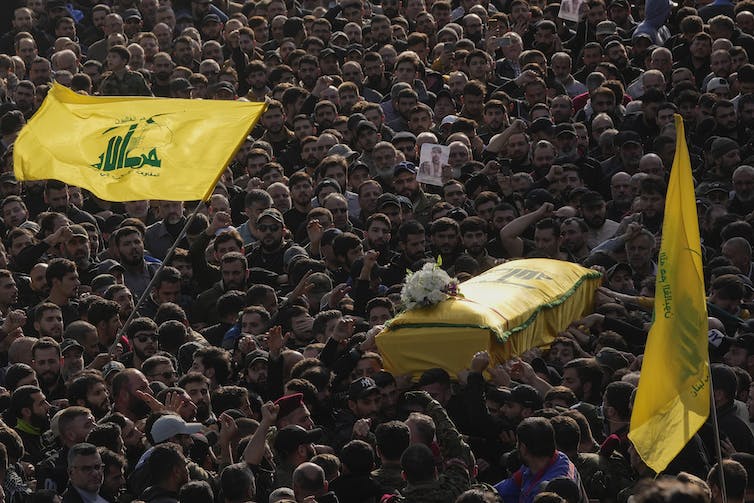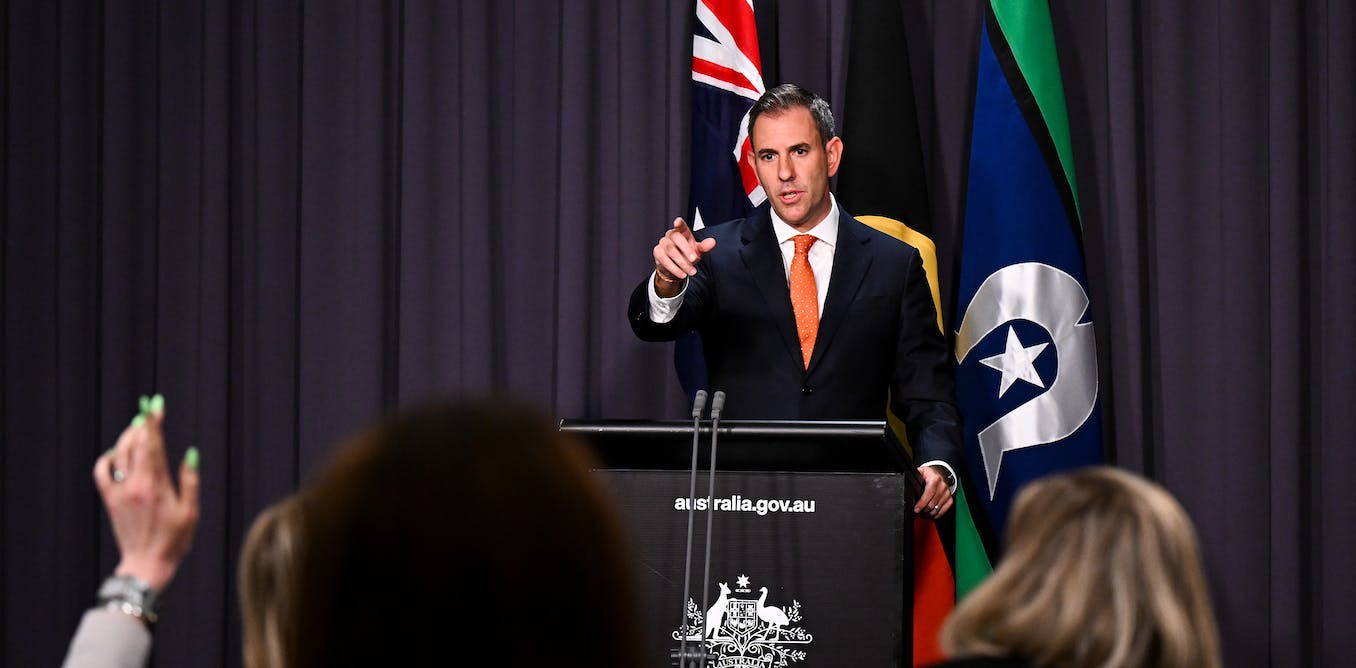Iran has tried to keep the war in Gaza at arm’s length by providing support for Hamas through armed groups it backs in Lebanon, Yemen and Iraq.
The Islamic Republic has indicated it wants neither to get directly involved in the fighting nor see the conflict escalate across the region. But as illustrated by the recent drone attack by pro-Iranian militias in Jordan that killed three American soldiers, the violence is spreading. Tehran may not be able to sustain its strategy much longer.
Tehran’s support for Hamas dates back to the 1990s, though the two have never been a perfect ideological match. Hamas comes from the Sunni sect of Islam, identifying more closely with the Muslim Brotherhood than it does with Shi’a Iran.
Is Hamas the same as ISIS, the Islamic State group? No − and yes
Relations broke down during the Syrian civil war as Tehran backed Bashar al-Assad’s regime and Hamas sympathized with the Sunni opposition. However, when the fighting ebbed, the two mended fences and Hamas rejoined the Axis of Resistance, a group of state and non-state entities centred in Iran that oppose Israel and the American presence in the region.
As part of the alliance, Hamas reportedly receives military equipment, training and somewhere between $70 and $350 million per year, depending on the source.
Important role
Iran does not appear to have been involved in the planning or execution of Hamas’s Oct. 7, 2023 attack on Israel. Indeed, United States intelligence reported Tehran was surprised by events.
Nevertheless, as the Gaza war continues, Iran is playing an important role. Tehran provides Hamas with rhetorical support and indirect military backing through the other members of the Axis of Resistance. While not tilting the balance of power in Gaza, this has signalled to the West and Israel that the campaign against Hamas will have a cost, particularly if it escalates.
There have been almost daily skirmishes between Hezbollah and Israeli Defense Forces on the Lebanese border. In Iraq, Iranian-backed militias have launched more than 150 attacks against American military installations, and the pro-Iranian Houthis in Yemen have launched ballistic missiles at Israel and attacked shipping in the Red Sea.
Western strikes against Houthis risk igniting a powderkeg in the Middle East
Nevertheless, Tehran’s message that it does not intend to get directly involved in the fighting has been relayed directly to Hamas by the Islamic Republic’s Supreme Leader Ayatollah Ali Khamenei and to the U.S. privately through intermediaries.
Tehran’s stance is evident in the particular way military force has been employed. Hezbollah’s attacks have been limited in size and restricted to the area around the Lebanese border — significant enough to indicate support for Hamas, but not threatening enough to justify Israel opening a second front.
Similarly in Iraq, the attacks have been relatively small. The strike against the Al-Asad air base in Iraq was described by the Pentagon as one of the largest yet, but the result was some damage to non-critical facilities and no fatalities. The U.S. retaliated with strikes of its own, but repeated the same mantra as Tehran; it did not want the fighting to escalate.
(AP Photo/Hussein Malla)
Houthis active
The most active of Iran’s proxies has been, surprisingly, the Houthis in Yemen, who say that they will blockade the Red Sea until the Israelis cease military operations in Gaza. By some estimates, 90 per cent of container shipping has been diverted, leading to higher prices and fractured supply lines.
Their attacks on shipping have provoked a series of missile and airstrikes from the U.S. and the United Kingdom, with Canada playing a supporting role.
While provocative, the risk for Tehran in this area is far less than it would be on the Lebanese border, where Israel would likely respond with a ground invasion.
A major conflict between Hezbollah and Israel would be devastating and unpredictable. It would put Iran’s main regional ally in jeopardy and could create conditions that would prompt Washington to attack Iran directly.
There’s little chance, however, of a ground invasion in Yemen, where the airstrikes appear to be bolstering the popularity of the Houthi leadership.

(AP Photo/Osamah Abdulrahman)
On the sidelines
It’s not difficult to understand why Tehran has chosen to straddle the fence between supporting Hamas and standing on the sidelines.
If Iran was to remain passive while Gaza is flattened by Israel, it would lose credibility. This would cost Tehran in terms of regional influence and undermine an alliance network essential to its ability to deter the U.S. and Israel.
A certain degree of conflict is also in Iran’s interest. Popular support for the Axis of Resistance has increased across the region, and the trend toward Israeli-Arab normalization is on hold for the foreseeable future. At the same time, though, Iran potentially has a lot to lose.
Iran has grown into a formidable military power, but its military, nuclear and economic infrastructure remain vulnerable to U.S.-Israeli military strikes.
The regime may also be politically vulnerable at home. It is unlikely the Iranian public would support a war to liberate Palestine, and given the recent anti-hijab protests and several years of simmering domestic unrest, it can no longer be taken for granted that U.S. military strikes would cause Iranians to rally around the flag.
Iranian protesters are making demands in charters and bills of rights
Maintaining the balance
Iran’s strategy is designed to strike a balance between these two concerns, but there are a number of things that could go wrong.
For one, Iran cannot control how its opponents respond. In Syria, Israel raised the stakes by assassinating a high ranking member of the Iranian Revolutionary Guard thought to be involved in arms transfers to Hezbollah.
Compelled to reply directly, Iran was only able to avoid a confrontation with Israel by striking targets in Iraq it claimed were associated with the Israeli Mossad.
Even within the Axis of Resistance, the lines of command and control are imprecise. Iran’s allies have their own agendas and their own ideas about how much force to use.

(Shawn Sanders and U.S. Army via AP)
The recent drone attack in Jordan is a case in point. Although the Islamic Resistance in Iraq — a loose group of pro-Iranian militias — has claimed responsibility, the U.S. is holding Iran accountable.
President Joe Biden’s administration still seems reluctant to target Iran directly, but the attack has ratcheted tensions up significantly.
It is also possible that Iran’s leadership will simply overplay its hand, particularly in the Red Sea. At a certain point, the West may lose patience with bombing Iran’s proxies and target the country itself.




